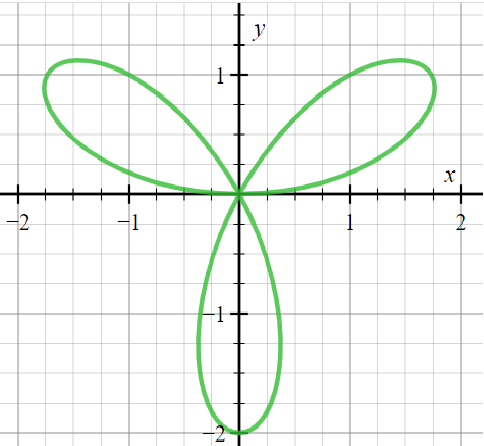Question
Question: How do I graph a rose curve?...
How do I graph a rose curve?
Solution
In this question, we are supposed to show how a rose curve can be done on a graph, and we will solve this with the help of polar equation. We know that the 2-D polar coordinates are P(r,θ), r =x2+y2⩾0
Complete step by step answer:
The 2-D polar coordinates P(r,θ), r =x2+y2⩾0 It represents length of the position vector <r,θ>.θ determines the direction. It increases for anticlockwise motion of P about the pole O.
For clockwise rotation, it decreases. Unlike r,θ admit negative values.
r-negative tabular values can be used by artists only.
The polar equation of a rose curve is either r=acosnθ orr=asinnθ
n is at your choice. Integer values 2, 3, 4..are preferred for easy counting of the number of petals, in a period. n = 1gives 1-petal circle.
To be called a rose, n has to be sufficiently large and integer + a fraction, for images looking like a rose.
The number of petals for the period [0,2nπ] will be n or 2n (including r-negative n petals) according as n is odd or even, for 0⩽θ⩽2π. Of course, I maintain that r is length ⩾0, and so non-negative. For Quantum Physicists, r > 0.
For example, considerr=2sin3θ. The period is 23π and the number of petals will be 3.
In continuous drawing, R-positive and r-negative petals are drawn alternately. When n is odd, r-negative petals are same as r-positive ones. So, the total count here is 3.
Prepare a table for (r,θ), in one period [0,23π], for θ=0,12π,212π,312π,...812π. Join the points by smooth curves, befittingly. You get one petal. You ought to get the three petals for 0⩽θ⩽2π..
Forr=cos3θ, the petals rotate through half-petal angle =6π, in the clockwise sense.
A sample graph is made for r=4cos6θ, using the Cartesian equivalent.
It is r-positive 6-petal rose, for 0⩽θ⩽2π.
Graph (x2+y2)3×5−4(x6−15x2y2(x2−y2)−y6)=0

Note: In mathematics, a rose or rhodonea curve is a sinusoid plotted in polar coordinates.
For integer values, the petals might be redrawn, when the drawing is repeated over successive periods.
The period of both sinnθ and cosnθ is 2nπ.
